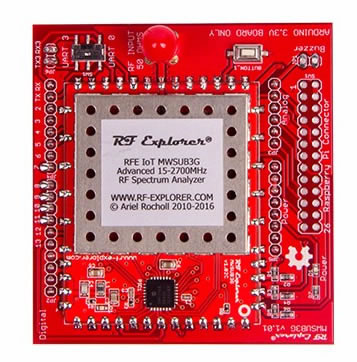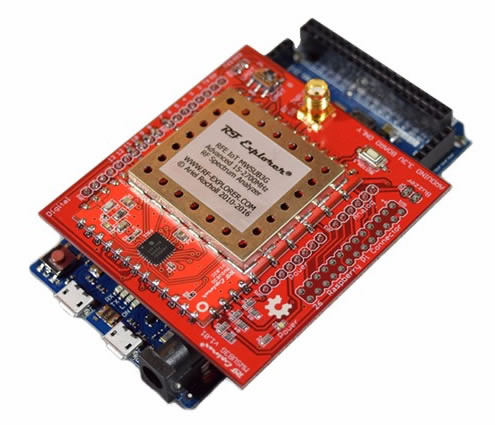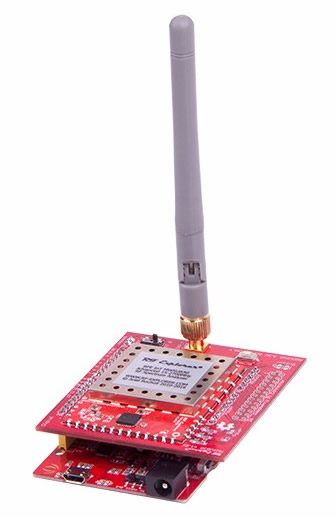RF Explorer 3G+ IoT Shield for Arduino
The RF Explorer 3G+ IoT modules are ready to use, advanced Spectrum Analyser devices you can configure and control any way you want, from an Arduino or other programming platform.
These modules are cost-effective platforms to develop your own customised Spectrum Analyser, Power Detector, RF activity alarm, RF sniffer, RF QA test bench, and more...
Programmability and network capabilities of the hosting platform enables remote control and diagnosis scenarios, fully automated RF alarm systems, advanced assistance for unattended detection requirements such as those of radio operators, cell towers and HAM stations. These modules are also small and low weight so you can add it on-board on any FPV plane or drone and use to scan the flight area to detect interferers, or measure antenna response.
IMPORTANT: Do not connect to 5V Arduino boards, the IoT module is only compatible with Arduino 3.3V models. Not following this advise will damage your IoT module.

RF Explorer 3G+ IoT Shield Arduino Board

Example installation of RF Explorer 3G+ IoT Shield Arduino Board
RF Explorer 3G+ IoT boards are delivered in two modes configuration modes: Raspberry Pi Arduino and compatible boards (3.0 – 3.3V only).
We recommend Raspberry Pi mode for advanced usage and more powerful libraries, and Arduino for simpler, non-Linux software libraries related development.
For best flexibility, these two boards can be easily re-converted between modes by soldering a required connector:
- Raspberry Pi Hat can be converted to Arduino Shield by soldering standard 0.1" male headers to the PCB
- Arduino Shield can be converted to Raspberry Pi Hat by soldering a 13x2 0.1" female header to the PCB
Designed in this way, it is easy to reconvert the board to a different hosting platform with no extra cost if you have different needs down the road.
Furthermore, other platforms such as BeagleBone, Chip, Chipkit and Teensy; all of them can easily control a RF Explorer 3G+ IoT by manually connecting to a standard UART port.
Instructions and further details (outside link)

Example installation of RF Explorer 3G+ IoT Shield Arduino Board - parts not supplied.
Features:
- Design and customise your own Spectrum Analyser, RF Detector, RF Sniffer, etc
- Open source design, open source libraries and examples
- Supported by all Arduino and Seeeduino 3.3V boards
- Suggested platforms:
- Arduino DUE (best performance)
- Seeeduino (lower cost and size)
- IMPORTANT: Do not use on 5V Arduino boards or will damage the IoT Shield
- Flexible board: can be connected to a Raspberry Pi by soldering a compatible female header
- Recommend select SMA antennas for specific applications - not supplied
Specifications:
- Includes the advanced 3G+ MWSUB3G RF Explorer module
- Frequency band coverage: 15-2700 MHz
- Standard SMA 50 Ohms connector
- Advanced selectable internal input stage: Normal, LNA, 30dB Attenuator
- Amplitude resolution: 0.5dBm
- Dynamic range: -130dBm to +10dBm
- Absolute Max input power: +30dBm
- Average noise floor level (typical with LNA enabled): -120dBm
- Frequency stability and accuracy (typical): ±10ppm
- Amplitude stability and accuracy (typical): ±3dBm
- All modules are factory calibrated
- Frequency resolution: 1kHz
- Resolution bandwidth (RBW): automatic 3kHz to 600kHz
- Protected with resettable fuse
- Power consumption: 100-500mW

